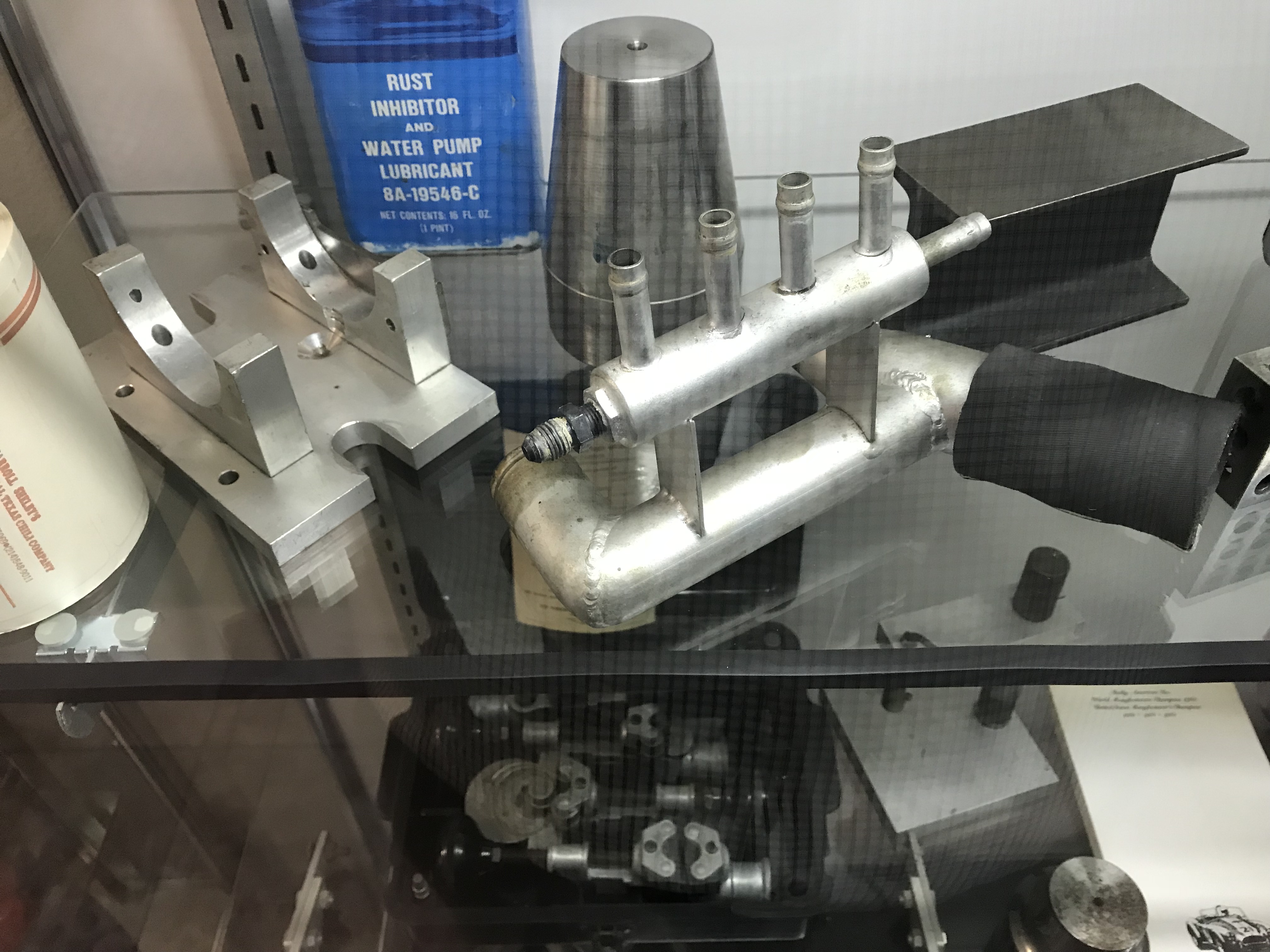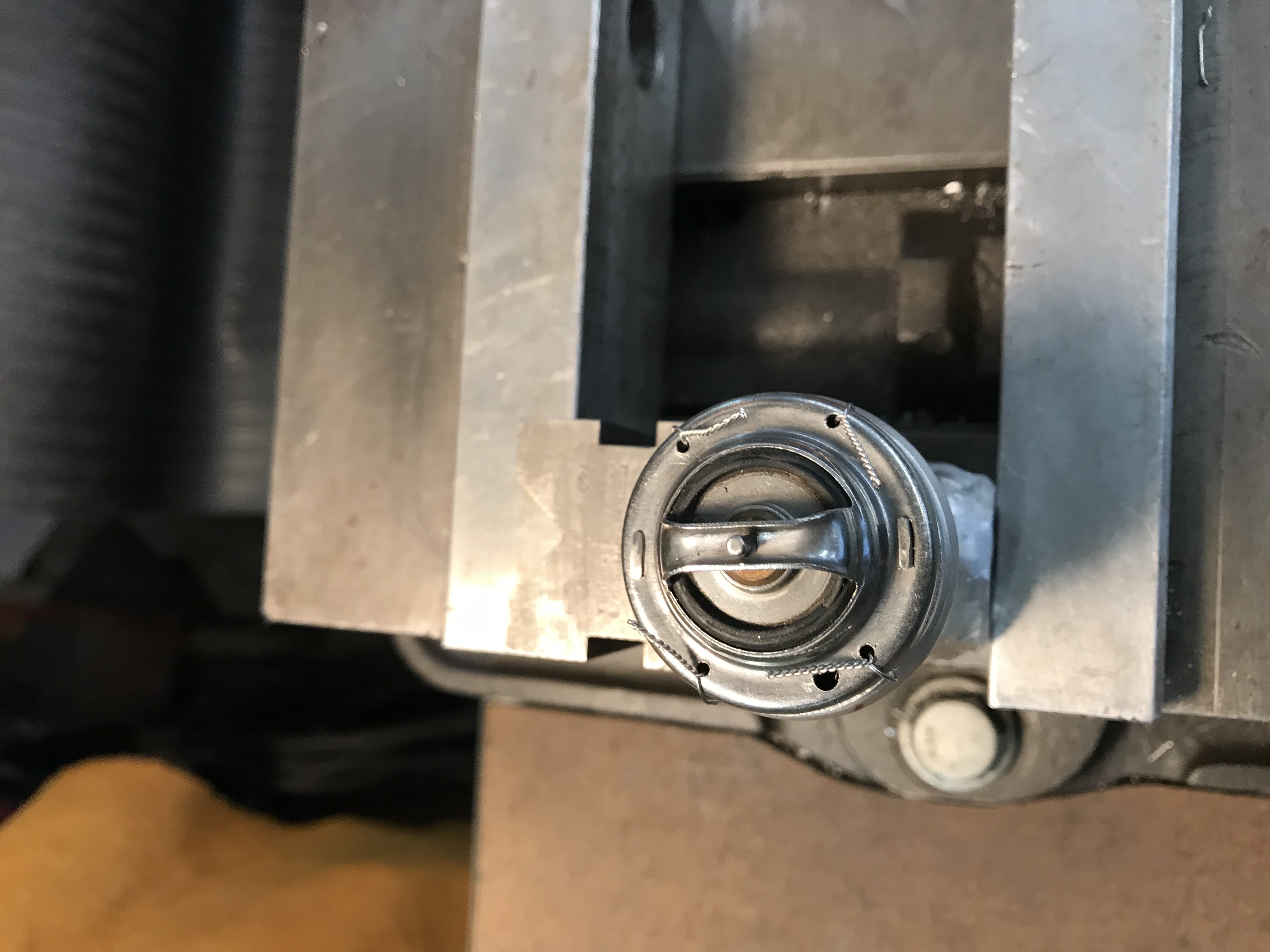Welcome to Our Garage
Daytona Coupe, 289 and 427 Cobras
-35-
Daytona Coupe Cobra -
Weber Cooling System Modifications
The Weber carburetor installation on the original Daytona coupe Cobras was designed for flat out racing; therefore, I can only assume that the Shelby crew's primary goal would have been to ensure maximum engine cooling water flow throught the radiator. The car probably spent minimal time at low speed.
My Daytona replica is destined to be a street driver, therefore, the cooling requirements for the engine in my are slightly different.
A stock 289 Ford engine which as used in the 289 Cobra roadster street cars has it's water outlet from a thermostat housing bolted to the front of the intake manifold. From the thermostat husing, the water is connected to the radiator inlet.
The original style Weber manifold's used on both the Daytona as well as the 289 Cobra roadster race cars have a completely different water outlet design. In these cars, there are two water outlets on either side of the manifold front face. These are connected via short 1" diameter hoses to a matching inlets on a fabricated steel (or brass in some cases) tube assembly. The fabricated tube has another 1-1/2" outlet port on the opposite end that directs the engine's hot water water flow to the radiator inlet.The fabricatied assembly has no provision for a thermostat. Additionally, the fabricated water outlet tube assembly also serves as a mounting point for distributing fuel to the Weber carburetors. Several variations of this fabricted part were made.
One example of the this fabricated assembly is shown in the photo below.

The problem with using the original Cobra design manifold and water neck on a street car is the lack of a thermostat. Many enthusiasts incorporate an inline thermostat in their Weber engined cars. That solves part of the problem.
The remaining (and more subtle issue) is that some of the inline thermostats do not incorporate any (or have inadequately sized) theromostat bypass provisions. This often hampers the engine's abiltiy to maintain an even temperature.
Inspection of a stock 289 Ford engine will reveal a thermostat bypass provision incorporated into the thermostat housing. The Ford engineers use a short 5/8" diameter hose plumbed in "parallel" with the thermostat to connect the outlet port to an inlet port on the water pump.
The other issue when installing the bypass in a Daytona is the radiator air outlet duct minimizes the space available for adding the required additional bypass hoses.
For my Daytona, I wanted to replicated the Ford engineers bypass concept while also maintaining (as much as possible) the original look of the Daytona plumbing. Additionally, the fabricated water outlet used on my Daytona is a vintage part from Shelby America and I did not want to modifiy it by adding a new outlet fitting to incorporate the bypass hose connection to the water pump
The solution
The solution that found acceptable was to install a small inline thermostat hidden in the 1-1/2" hose running between the water neck and the radiator inlet. Between the water neck and the radiator, a short section of 1-1/2" aluminum tubing was installed. In this tube a 5/8" fitting was installed. The 5/8" bypass hose was used to connect to the engine water pump just as in the original Ford design. Most importantly, it works perfectly and allows the engine to quickly come up to temperature and maintain the thermostat temperature setting.
The following photo shows a test fit of the 5/8" threaded fitting in the aluminm bypass tube before welding.
The following photo shows the inline thermostat safety wired into the outlet of the tube containing the bypass fitting.

